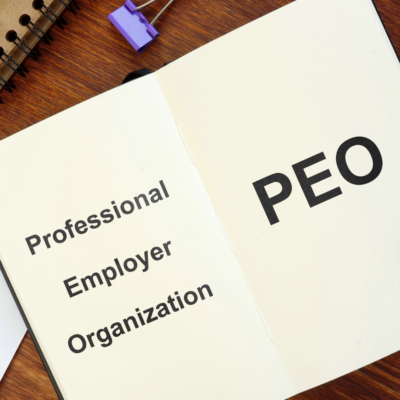Everything You Need to Know About PEOs
HR is like a triangle.
At least that’s what this week’s guest on America Back to Work, Brent Tilson, believes. Tilson is the founder and CEO of TilsonHR, a national professional employer organization providing a comprehensive suite of business solutions to help businesses grow and thrive.
“That triangle is broken into three sections where the bottom third of the triangle, the largest in width, is H.R. transactional activities: processing payroll, managing benefits, enrollment, and compliance activities,” says Tilson on the podcast.
The middle of the triangle represents HR functions where HR managers and employees work together, including compensation, recruiting and hiring, learning and development, and performance management. The top of the triangle, and the smallest in width, is strategic HR: leadership development, organizational design, change management, and so on.
The top two-thirds of the HR triangle push the business forward and drive key organizational goals, while the bottom section keeps it afloat. “It’s the treadmill of HR,” shares Tilson. “These tasks need to get done every day and done really well.”
For HR departments to succeed in the upper two-thirds of the triangle, however, they must first master the bottom third. But the tasks in the bottom third are notoriously tedious and time-consuming, and that’s where a PEO comes in.
What Is a PEO?
A professional employer organization (PEO) provides comprehensive HR solutions to growing businesses in payroll, benefits, tax administration, and more areas. Perhaps most importantly, they keep up with regulatory changes at all levels, which helps ensure compliance and reduces HR’s workload.
PEOs operate under the concept of co-employment in which the PEO and its customer share the responsibilities of being an employer. This arrangement benefits organizations that want to mitigate some of the costs and liability associated with being an employer.
While some PEOs only cover basic, repeatable HR tasks, others allow organizations to outsource more in-depth services like employee onboarding, risk management, handbooks, recruiting, and employee analytics.
By partnering with a PEO, businesses can focus on their core operations and high-level strategy while leveraging the expertise and resources of the PEO to manage their workforce more efficiently and effectively.
Should I Use a PEO?
Partnering with a PEO empowers businesses to access economies of scale and expertise that would otherwise be near-impossible to achieve on their own, making professional employer organizations an excellent option for small to midsize companies.
Small businesses that work with a PEO grow 7-9% percent faster, have employee turnover that is 10-14% lower, and are 50% less likely to go out of business.
“PEOs are able to use their size to negotiate, for example, better benefits, and they manage it all so the employer can focus on what they do best,” says Tilson. “This allows businesses to compete with the benefits that a Fortune 500 company might provide.”
A PEO can also assemble a tech stack with solutions a business might not otherwise be able to get on its own, either because of cost or because it’s for enterprise customers only.
Large and enterprising businesses don’t need that boost and have the financial resources necessary to staff an entire in-house HR team with full capabilities––which makes things like legal, IT, and nearly everything else easier to do.
PEOs are also not optimal for organizations that are cash-crunched, but for those small to midsize companies that have the means, the return on investment of using a PEO, in cost savings alone, will be upwards of 27.3 percent.
How Much Does a PEO Cost?
Fees are typically based on the company’s number of employees and the types of PEO services they use. Generally speaking, PEOs offer one of two major pricing models to calculate cost: the percentage or flat fee models.
Through the percentage model, the PEO charges fees based on a percentage of payroll. Industry experts estimate that a PEO’s average cost is between 2-12% of payroll, with most organizations falling somewhere in the middle of that range.
The PEO charges a flat fee per employee per month through the flat fee model. The range for flat PEO fees falls between $40/month per employee on the low end and $160/month on the high end.
For more in-depth insights into how a PEO can expand your HR capacity and help you grow, tune in for this week’s episode of America Back to Work with Brent Tilson––and be sure to subscribe here so you never miss another episode.







